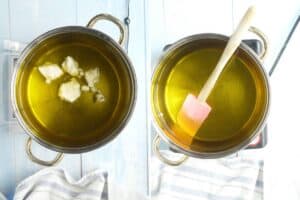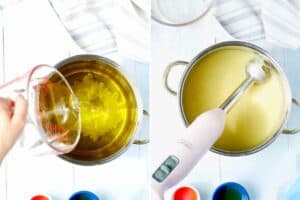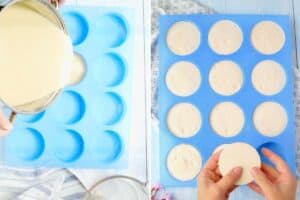How to Make Bastille Soap: A Beginner’s Bar with Shea Butter + Olive Oil
My bastille cold-process soap recipe is a gentle and nourishing soap ideal for sensitive skin. Made with a high concentration of olive oil and enriched with shea butter, it offers a luxurious and moisturizing cleanse. Plus, it has all the benefits of castille soap (which is made entirely of olive oil) but is much easier to work with, cures faster, and lathers better.
But before you start, it’s important to read up on the basics of soapmaking. Check out this overview of soapmaking for beginners to get started. Just remember that cold-process soap is a bit different from other methods and requires special safety precautions and supplies.
Bastille Soap Recipe
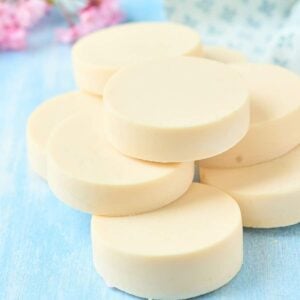
Equipment
- soap mold (I prefer a cavity mold rather than a loaf mold for this recipe)
- Safety equipment (gloves, goggles, and an apron)
Ingredients
- 25 ounces olive oil
- 2 ounces shea butter
- 3.46 ounces lye
- 8.5 ounces water
Save This Recipe
You'll join my email list which you will love. And if you don't, unsubscribe in one click. ❤️
Instructions
- Make the lye water. Measure out the lye and water in separate containers using a digital scale. Slowly add the lye to the water, stirring continuously until fully dissolved. Note that the mixture will heat up and become cloudy. Set aside to cool in a well-ventilated area.
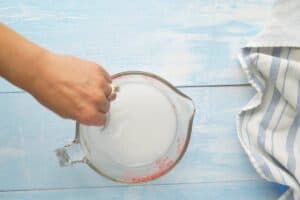
- Melt the oils. Measure the oils separately, then combine them in a large pot. Melt the olive oil and shea butter over medium-low heat until the shea butter is fully melted. (You may find it helpful to soften the shea butter in the microwave first, as it's slow to melt.) Set aside to cool.

- Stick blend to trace. Once the lye water and oils have cooled to about 100-115 degrees, pour the lye water into the pot with the oils. Get your soap molds and any fragrance or color you add. Using a stick blender, mix until the mixture reaches 'trace' (the consistency when droplets sit on the surface briefly before sinking in). Then, add any desired fragrances or colors.

- Cure and unmold. Pour the soap mixture into the mold. Tap the mold gently on a firm surface to remove any air bubbles. Allow the soap to set in the mold for 24-48 hours before unmolding. Then, cure the unmolded soap in a cool, dry place for at least 3 weeks before use.

Video
Notes
Did You Make This?
I would love it if you would leave a review!More Tips:
Make sure you have a quiet, distraction-free workspace. Cold process soap requires focus and mistakes are hard to fix.
Measure your ingredients carefully. Soapmaking is a science and even a small mistake can ruin your batch.
If you’re new to soapmaking, I recommend using a fragrance or essential oil that is known for being easy to work with. Floral fragrances tend to be trickier than fruity or fresh scents.
If the appearance of our bar is very important to you, spray the top of your mold with 99% isopropyl alcohol to prevent soda ash (a white coating on the bar. that can develop with this recipe. It’s not attractive but doesn’t affect the finished product

About the Ingredients
Here are some ingredient substitutions you can use for the Bastille Soap recipe.
- Shea Butter: You can use Cocoa Butter in the same amount. This will make the soap slightly harder, but still moisturizing. But if the person is allergic to tree nuts, you can use Mango Butter instead.
- Olive Oil: Canola or Sunflower Oil are great alternatives. But remember that these oils will produce a softer bar with a different lather. For those who are sensitive to Olive Oil, Grapeseed Oil is a lighter and generally well-tolerated alternative.
- Fragrances and Colors: For fragrances and colors, use natural and hypoallergenic options like essential oils from lavender or chamomile, and natural colorants like clays or botanical extracts.
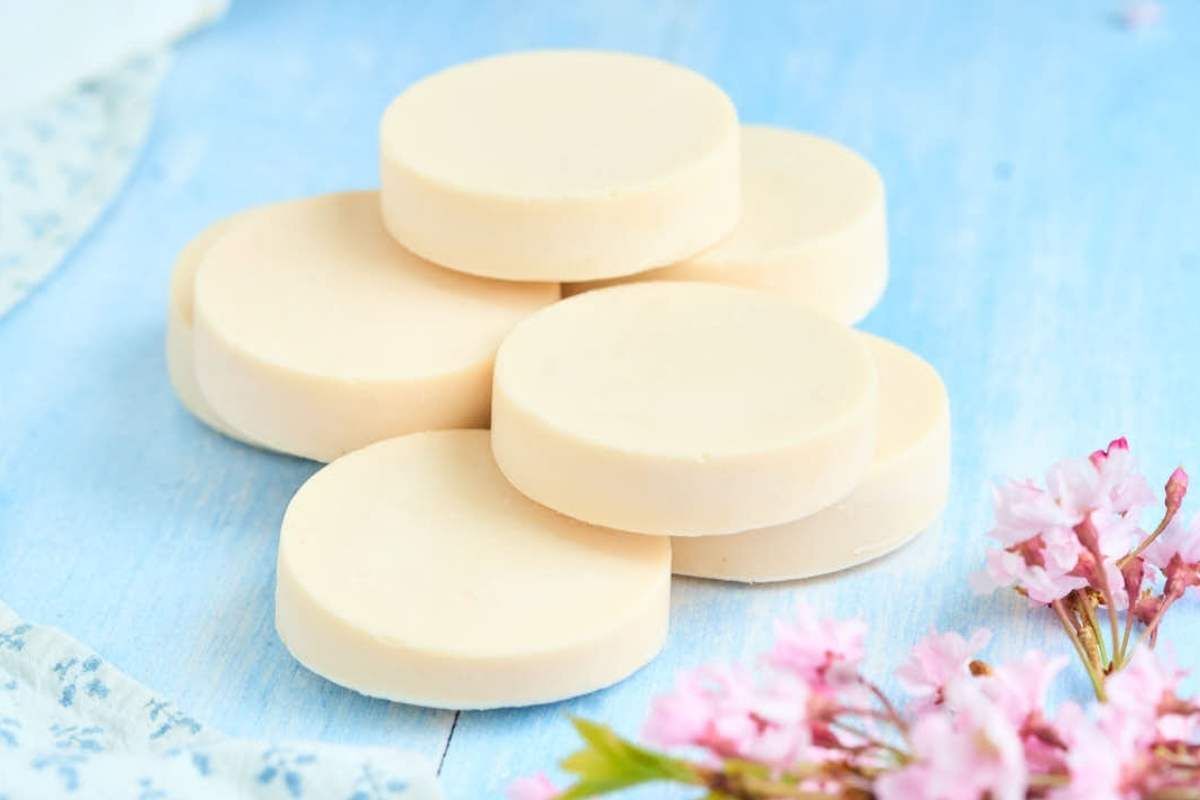
Remember that changing ingredients in soap recipes can affect the final texture, lather, and feel of the soap. It’s a good idea to test small batches first before making larger quantities.
If you’re tired of buying and measuring out so many oils for soap-making our Bastille soap recipe is for you. It’s also perfect for beginners, as it’s super easy to follow. Not to mention, it creates a great family bar that everyone can use – from kids to adults and even the elderly.
So go ahead and create your new soap! It’s the perfect way to add a cozy touch to your daily routine.
Love,


